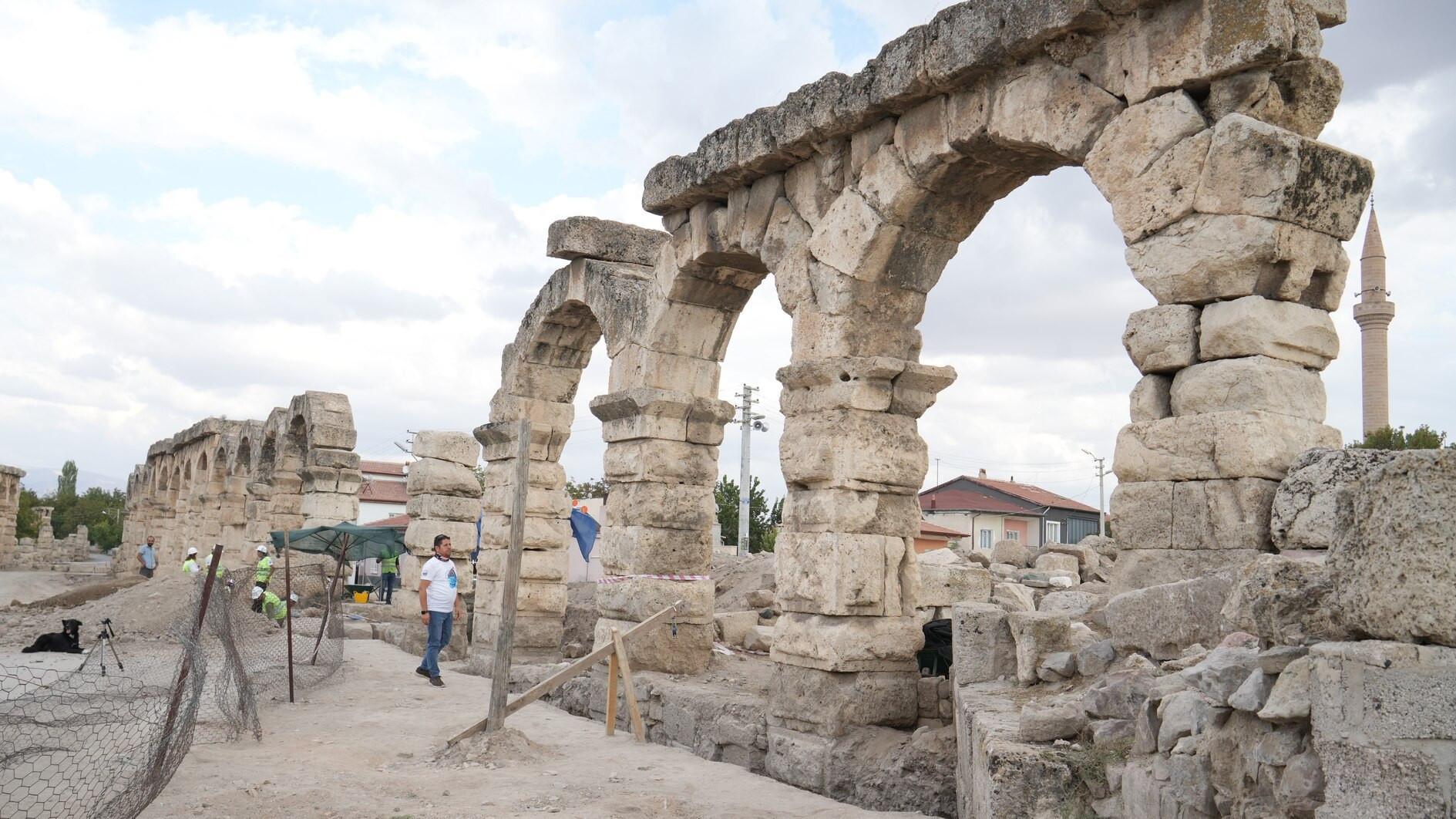
The underground parts of the approximately 2,000-year-old aqueducts, located in Kemerhisar, a district of Bor in Niğde, are being brought to light during archaeological excavations.
Kemerhisar, which is protected as an archaeological site and has hosted many civilizations, was known as Tuwanuva during the Hittite period and Tyana during the Roman period. The underground sections of the aqueducts, which are approximately 3 to 4 kilometers long and 10 to 11 meters high, will be restored to their former glory. These aqueducts, built during the Roman era, were designed to carry spring water from the ancient Roman pool in Bahçeli Town to the city of Tyana.
Providing information about the excavation work carried out in the ancient city, known for its uninterrupted settlement until today, the head of the excavation team and Aksaray University Archaeology Department faculty member, Professor Osman Doğanay, said that the ancient city of Tyana can be considered the Ephesus of Central Anatolia.
"It is the first ancient city that opens into Central Anatolia after Gülek Pass, making it an important location. Due to this location, it has been continuously inhabited for at least 5,000 years. The present-day Kemerhisar Municipality is built on top of this ancient city. We began archaeological excavations here in 2016. In 2021, under a presidential decree, the excavations gained 12-month excavation status. This year, under the 'Legacy for the Future' project of the Culture and Tourism Ministry, we continue excavations to open the aqueduct road to visitors. As part of this project, after the aqueducts are unearthed, landscaping and restoration work will be completed, and then we will open the site to visitors," he said.
Doğanay stated that when the work is completed, the ancient city of Tyana, which is home to the aqueducts with a 1,500-meter-long walking corridor, will be open to visitors. He noted that the sections of the aqueducts buried under approximately 3.5 meters of flood debris are being uncovered.
"Excavations revealed a dense flood layer in the city. There is a flood layer approximately 3.5 to 4 meters thick here. The aqueducts were originally 10-11 meters high, and their grand facade was visible when first constructed. In addition, adjacent to the aqueducts are Hellenistic-era walls that were built earlier. But when the flood came, it buried about 4 meters of the site. We will uncover the grand structure of these aqueducts."
Osman Doğanay mentioned that after the excavation and restoration works are completed, the site will start accepting visitors. He added that their goal is to completely remove the sediment layer.
"Our goal is to reveal all of the city walls from the period when the city was originally built with all their glory. This is an ancient city that is a candidate to be the Ephesus of Central Anatolia. It is actually the only ancient city in Central Anatolia that has survived and is protected, and it is a magnificent city. Currently, there are over 110,000 visitors per year, and we want to increase this number to 1 million,” Doğanay said.